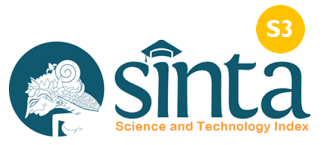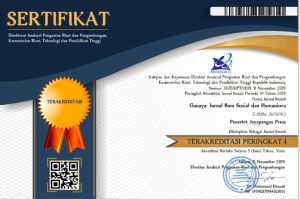Strategic Business Planning for Optimizing Work Atmosphere, Employee Participation, and Workforce Efficiency in Manufacturing Industries
DOI:
https://doi.org/10.37329/cetta.v8i4.4460Keywords:
Company Strategy, Employee Satisfaction, Employee Performance, Manufacturing Industry, GNB-04 MachineAbstract
This study aims to analyze the strategic role of corporate initiatives in improving work climate, enhancing employee engagement, and increasing workforce productivity within the manufacturing industry. Employing a descriptive research design, data were obtained through structured surveys and in-depth interviews with employees from several manufacturing firms. The study identifies key strategic factors namely open internal communication, consistent employee recognition, provision of adequate workplace infrastructure, and ergonomic optimization as primary drivers of a positive organizational climate. A particular emphasis is placed on the GNB-04 machine, a high-efficiency industrial tool frequently used in production lines. Ergonomic improvements and proper maintenance of this equipment have been found to significantly reduce physical strain, thereby enhancing employee safety, comfort, and operational performance. The integration of human-centered design principles with strategic equipment use underscores the importance of aligning corporate strategy with both technological and human resource considerations. The research findings demonstrate that a well-structured corporate strategy that prioritizes employee well-being can substantially improve motivation, job satisfaction, and long-term workforce effectiveness. Moreover, companies that proactively foster a positive work environment experience not only improved individual performance but also organizational resilience and sustainable productivity. This study contributes to the broader discourse on strategic human resource management and operational excellence by offering empirical evidence on the synergistic impact of workplace climate and engagement strategies. The practical implications highlight the necessity for manufacturing leaders to formulate policies that holistically address both technological advancement and psychosocial workplace dynamics. Investing in such integrated strategies is essential for achieving a sustained competitive advantage in the global manufacturing landscape.
References
Ali, M. M., Hariyati, T., Pratiwi, M. Y., & Afifah, S. (2022). Metodologi Penelitian Kuantitatif Dan Penerapan Nya Dalam Penelitian. JPIB: Jurnal Penelitian Ibnu Rusyd, 1(2), 1-5.
Aisyah, R. (2021). Penguatan Nalar Kritis Siswa Melalui Pembelajaran Berbasis Proyek.
Jurnal Pendidikan, 10(4), 55-67.
Anantia, R., Marthin, R., Alexander, A., Hadi, N., & Sonata, V. (2023). Pengaruh Penerapan Manajemen Operasional Saat Pandemi di PT. Pabrik Kertas Tjiwi Kimia Tbk. Jurnal Minfo Polgan, 12(1), 716-723.
Asri, S. K., & Julisman, I. (2022). Pengaruh Citra Merek dan Kualitas Produk Philips terhadap Minat Beli Konsumen pada Yogya Garnd Majalengka. Jurnal Impresi Indonesia, 1(3), 282-287.
Damayanti, D., Alamsyah, A. I. S., & Atirah, A. (2023). Peranan Umkm Terhadap Kesejahteraan Karyawan (Studi Kasus UMKM ISR Bone). Jurnal Asy-Syarikah: Jurnal Lembaga Keuangan, Ekonomi Dan Bisnis Islam, 5(1), 48-58.
Mariam, S. (2023). The Company Strategy in Improving the Work Environment To Maximise Employees Satisfaction and Performance. International Journal of Multidisciplinary Research and Literature, 2(5), 706-715.
Nizar, F. (2021). Sarana Prasarana Sebagai Faktor Penunjang Implementasi Kurikulum Merdeka di Sekolah Dasar. Jurnal Pendidikan Dasar, 9(1), 45-56.
Pardamean, N. (2022). Peran Mediasi Motivasi Kerja Pada Pengaruh Komitmen Organisasi Dan Lingkungan Kerja Terhadap Kinerja Pegawai Pada Kantor Dinas Ketahanan Pangan Dan Peternakan Provinsi Sumatera Utara. Jesya (Jurnal Ekonomi & Ekonomi Syariah), 5(1), 572-585.
Ratnasari, D., Utami, H. N., & Prasetya, A. (2023). The Impacts of Perceived Organizational Support and Work Environment on Employee Performance: The Mediating Effects of Job Satisfaction. Profit: Jurnal Administrasi Bisnis, 17(2), 267-281.
Seta, A. B. (2020). The Effect of Motivation And Work Environment On Job Satisfaction With An Impact On Employee Performance At PT. Bina Agramulya in Jakarta. Kontigensi: Jurnal Ilmiah Manajemen, 8(2), 281-291.
Sivaram, M., Hudaya, A., & Hapzi, A. (2019). Building a Purchase and Prchase Decision: Analysis of Brand Awareness and Brand Loyalty (Case Study of Private Label Products at Alfamidi Stores In Tangerang City). Dinasti International Journal of Education Management And Social Science, 1(2), 235-248.
Sari, N., & Arifin, M. (2022). Penguatan Karakter Siswa Melalui Pembelajaran Berbasis Proyek di Sekolah Dasar. Jurnal Pendidikan Karakter, 21(1), 18-30.
Warahmah, M., Risnita, & Jailani, M. S. (2023). Pendekatan Dan Tahapan Penelitian Dalam Kajian Pendidikan Anak Usia Dini. DZURRIYAT: Jurnal Pendidikan Islam Anak Usia Dini, 1(2), 72-81.
Downloads
Published
How to Cite
Issue
Section
License
Copyright (c) 2025 Syifa Nur Muflihah, Marsono Marsono

This work is licensed under a Creative Commons Attribution-ShareAlike 4.0 International License.
An author who publishes in the Cetta : Jurnal Ilmu Pendidikan agrees to the following terms:
- Author retains the copyright and grants the journal the right of first publication of the work simultaneously licensed under the Creative Commons Attribution-ShareAlike 4.0 License that allows others to share the work with an acknowledgement of the work's authorship and initial publication in this journal
- Author is able to enter into separate, additional contractual arrangements for the non-exclusive distribution of the journal's published version of the work (e.g., post it to an institutional repository or publish it in a book) with the acknowledgement of its initial publication in this journal.
- Author is permitted and encouraged to post his/her work online (e.g., in institutional repositories or on their website) prior to and during the submission process, as it can lead to productive exchanges, as well as earlier and greater citation of the published work (See The Effect of Open Access).
Read more about the Creative Commons Attribution-ShareAlike 4.0 Licence here: https://creativecommons.org/licenses/by-sa/4.0/.





